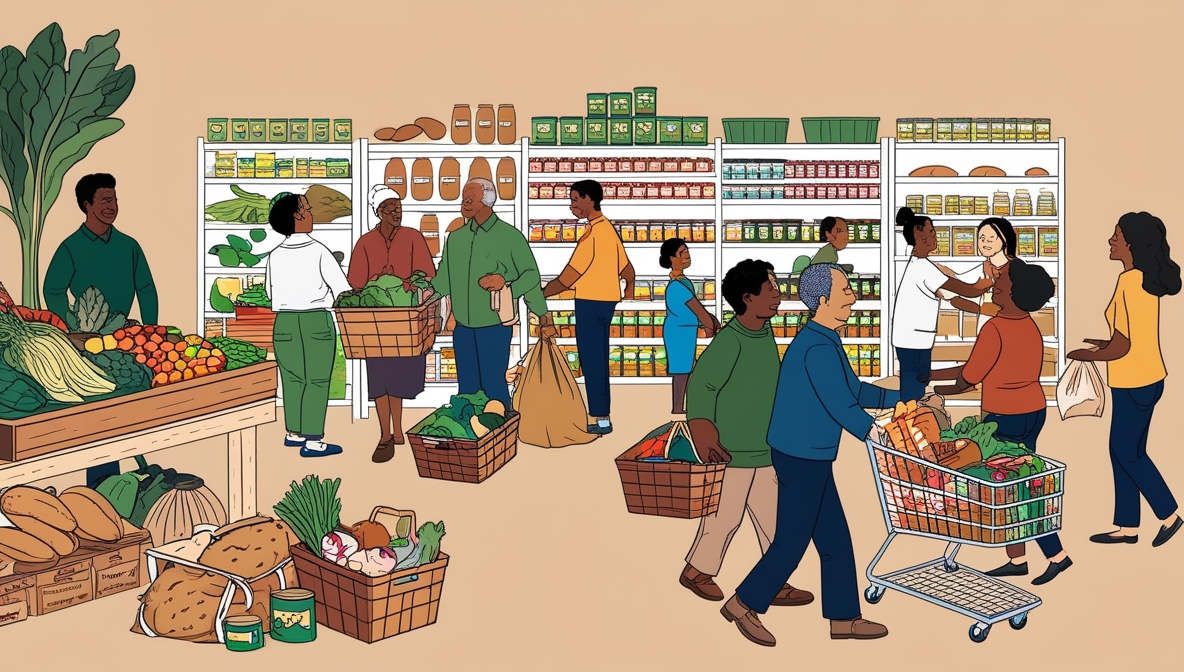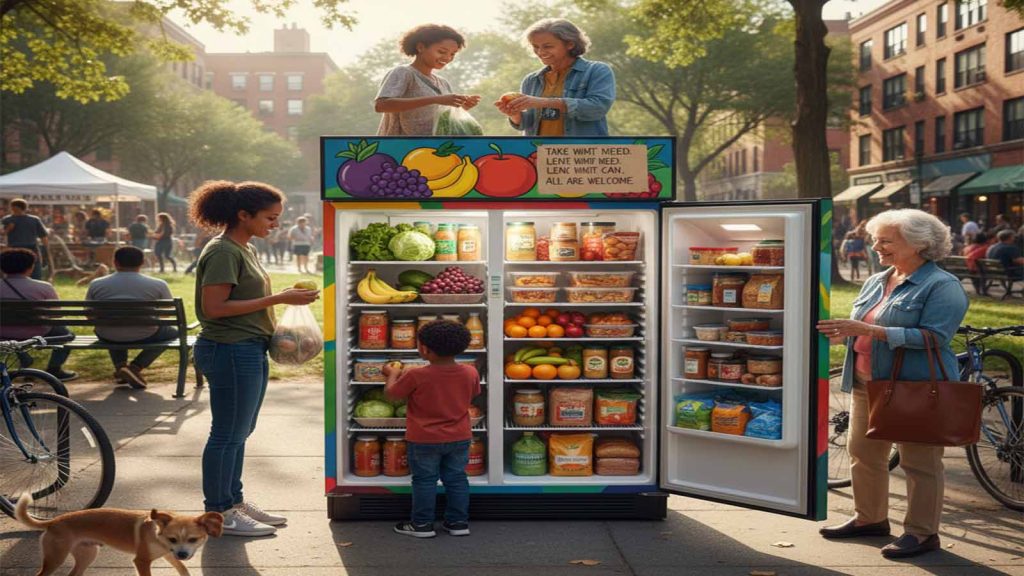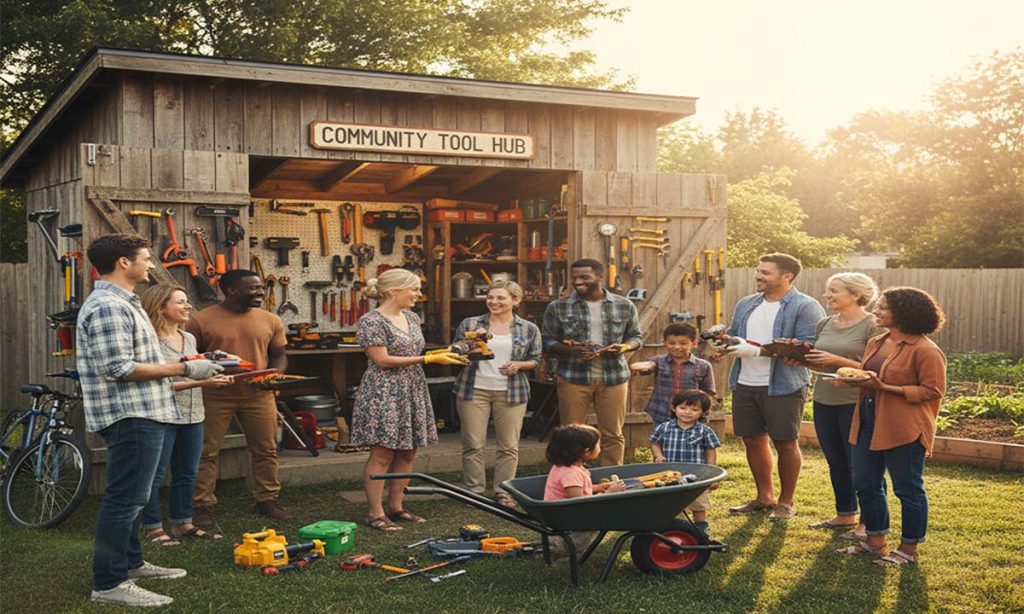Providing a reliable food source can be transformative for communities, addressing hunger and helping residents who face food insecurity. A community food pantry does precisely that—acting as a resource that brings neighbors together to provide support. Here’s a step-by-step approach to establishing a food pantry that truly serves your community.
1. Research and Understand Local Needs
To make a meaningful impact, start by understanding the community’s specific needs. Gather information through local surveys, conversations with residents, and discussions with existing community organizations. Look at:
- Demographics – Who are the people in need? Families? Seniors?
- Current Resources – Are there other food banks or pantries nearby?
- Gaps in Service – Identify days, times, or groups not adequately covered by existing services.
Connect with local social services and schools, as they often have valuable insights into the community’s food security needs. For communities facing broader challenges, consider companion initiatives like how to start community garden projects, which not only provide fresh produce but also foster a sense of shared responsibility and resilience.
2. Assemble a Dedicated Team
A strong food pantry requires committed volunteers. Gather a team of people who are not only passionate about the cause but also bring specific skills such as organization, fundraising, and logistics. Your team might include:
- Community Leaders who know the local area and can help spread the word.
- Logistics Experts for efficient planning and handling food deliveries.
- Fundraisers who can drive donation efforts, both in-kind and monetary.
- Marketing and Outreach Members who can raise awareness about the pantry and engage volunteers.
3. Secure a Location
Choose a venue that is easily accessible and serves as an inclusive community space where all residents feel welcomed and supported. Consider spaces in community centers, churches, or local nonprofit buildings. Essential features of a good location include:
- Accessibility – Ensure it’s accessible to people with disabilities and close to public transportation if possible.
- Storage Space – You’ll need sufficient room for dry storage, refrigeration if possible, and space for food distribution.
- Safety – Consider locations with safe, easily monitored entry and exit points.
Once you have a location, review local regulations regarding food distribution to ensure compliance with health and safety standards.
4. Establish Partnerships and Source Food
Reliable food sourcing is crucial. Partnerships can significantly bolster your food pantry’s success. Here are some ideas for sourcing food:
- Local Grocery Stores and Restaurants – Many have programs to donate excess food items.
- Food Banks – Partner with regional food banks; they often distribute to local pantries.
- Community Food Drives – Organize food drives at schools, churches, and events.
- Direct Purchases – Some items might need to be purchased, especially non-perishable staples.
Reach out to local farms and markets as well; some may be willing to donate fresh produce. Establish a schedule for regular food collection, delivery, and distribution.
5. Fundraising and Financial Planning
A community food pantry will require ongoing funds for operational expenses such as transportation, packaging materials, and possibly rent. Develop a financial plan by:
- Creating a Budget – Calculate costs for necessary supplies, utilities, and any licensing fees.
- Applying for Grants – Many foundations and local governments offer grants for community food programs.
- Organizing Fundraisers – Events like bake sales, community fairs, or donation drives can bring in funds.
- Encouraging Individual Donations – Set up a clear process for online donations and offer multiple methods for people to contribute.
Maintaining financial transparency builds trust in your organization and encourages further support from the community.
6. Set Up Inventory and Distribution Processes
For effective operations, establish clear processes for managing food supplies and distribution. Consider the following steps:
- Inventory Management – Implement a system to track items, monitor expiry dates, and identify high-demand products.
- Storage and Organization – Separate perishable and non-perishable items, keeping high-traffic items easily accessible.
- Distribution Schedule – Determine the best times for distribution to avoid long waiting periods and manage crowd control. Weekly or bi-weekly schedules are common.
- Guest Registration – For larger operations, you may want a simple system for tracking visitors to ensure fair distribution.
Having a clear system for inventory management and distribution will keep operations smooth, reduce waste, and ensure every visitor receives essential items.
7. Develop Policies for Operation and Hygiene
Food safety should be a top priority. Develop a set of policies to maintain hygiene standards and outline operating procedures, including:
- Sanitation Protocols – Volunteers should follow hygiene protocols, such as regular hand-washing and wearing gloves.
- Expiration Date Monitoring – Regularly check food expiration dates to ensure food safety.
- Food Handling Training – Train all volunteers on basic food handling procedures.
- Visitor Guidelines – Post clear guidelines about who can access the pantry and the quantity of food they can take.
These policies keep your operations efficient, safe, and equitable.
8. Promote the Pantry and Engage the Community
Effective outreach ensures the pantry reaches those who need it most. Use various channels to spread the word:
- Flyers and Posters – Distribute them around local schools, community centers, and bus stops.
- Social Media – Create profiles on platforms like Facebook and Instagram to reach a wider audience.
- Word of Mouth – Encourage volunteers and visitors to spread the word.
- Collaborate with Local Organizations – Partner with other community organizations for cross-promotion and support.
Continuous community engagement will help sustain your food pantry and foster goodwill. Successful promotion will drive community engagement, helping the food pantry reach more residents and encouraging local support.
9. Launch and Monitor the Pantry’s Impact
Once everything is in place, launch your food pantry. On launch day:
- Welcome Visitors and Volunteers – Engage with everyone who attends and gather feedback on the experience.
- Track Attendance – Monitoring the number of visitors helps measure impact and adjust inventory.
- Adjust Based on Community Needs – Be prepared to adjust the pantry’s offerings based on community feedback, seasonality, and visitor frequency.
After the launch, keep a regular check on operations and impact. Collect data on the number of individuals served, food distributed, and community feedback to measure your pantry’s effectiveness.
10. Continue Building Relationships and Securing Support
A sustainable pantry requires ongoing support. Stay connected with local businesses, donors, and community members to strengthen and expand the pantry. Here are ways to keep support flowing:
- Monthly Updates – Send updates to donors and community members about the pantry’s progress and needs.
- Recognition Programs – Publicly recognize regular donors, partners, and volunteers to keep morale high.
- Community Events – Host small events or open days where the community can engage with the pantry, learn about its operations, and see their impact firsthand.
Regular engagement and appreciation help ensure your food pantry remains a valued community resource.
11. Evaluate and Plan for Long-Term Growth
After running for several months, take time to review the pantry’s achievements and challenges. This step involves:
- Surveying Visitors – Gather feedback from those who use the pantry about what works and what doesn’t.
- Assessing Financial Health – Ensure funds remain stable for operational expenses.
- Expanding Services if Possible – If resources allow, consider offering additional services such as nutrition workshops or cooking classes.
Continuously refining and improving the pantry based on these evaluations will keep it responsive to community needs, ultimately strengthening its role as a trusted resource.
Final Thoughts
Establishing a community food pantry is more than just handing out food. It builds a network of support, dignity, and shared purpose. By taking thoughtful steps and actively engaging with the community, a food pantry can become a cornerstone in helping to reduce food insecurity and create lasting change.






